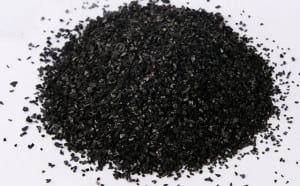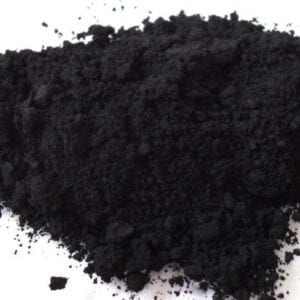The activated charcoal is a term representing a large family of adsorbents based on the chemical element carbon, in the form of carbon, which are highly crystalline and have a large internal porosity. This high internal porosity is what gives activated carbon its great applications.

Activated carbon is characterised by a very high number of micropores. The micropores are smaller than 2 nanometres in radius (1 nanometre=1e-9 m). Thanks to this high microporosity, their surface area increases to hundreds of m2 and can have values of 2500m2/g. The structure of activated carbon shows a large number of voids, recesses and cracks. It is in all these micropores that adsorption takes place, which is the characteristic that gives activated carbon its applications. By activating a carbon what we are doing is enlarging the surface area and its adsorption capacity. Carbon can be activated chemically or thermally. Thermal activation is achieved by oxidising parts of the carbon, creating pores, but preventing the carbon from evaporating and losing more carbon than necessary. The thermal process takes place at temperatures between 600 and 1000°C.
ADSORPTION OF ACTIVATED CARBON
The main characteristic of activated carbon is its adsorption. Adsorption should not be confused with absorption. In adsorption, the adsorbent solid (in this case activated carbon) is used to remove substances from water or air. Activated carbon has a large internal surface area, thanks to micropores, of between 500 and 1500m2/gram.
Granulated carbon is used especially in water treatment and can adsorb the following particles:
- Vegetable oil
- Halogenated substances: I, Br, Cl, H, and F
- Taste
- Odours
- Yeast
- Non-water soluble substances
ACTIVATED CARBON APPLICATIONS
- Activated carbon water filters. To make water drinkable (thanks to the carbon it is possible to retain fats, oils, odours, toxins, insecticides, organic compounds from the decomposition of vegetables or animals...).
- Activated carbon air filters. Elimination of odours in the air. Activated carbon is used for example in air recirculation systems, or in drain vents.
- Activated carbon in aquariums. Activated carbon for the removal of toxic substances in aquariums.
- To treat people with acute intoxication. It is a universal antidote for adsorption of toxic substances also inside our organism.
- Discolouration of vegetable oils, corn glucose and other liquids intended for use in foodstuffs
- Activated carbon is also used to decolourise alcoholic beverages (e.g. wine).
- Gold recovery
CHARACTERISTICS AND TYPES OF ACTIVATED CARBON
There are several ways to classify activated carbon, according to some of its characteristics, among them: Surface area. The surface area is the total surface area of the activated carbon taking into account all micropores. It is the main indicator of the activity of the activated carbon. Poral radios. The size of the pore radii is another way to know the performance of the material. * Micropores smaller radius 2 nm * Mesopores r ≈ 2-50 nm *Macropores r larger 50 nm Iodine number. It is commonly used to characterise the adsorption of carbon, through the adsorption capacity of iodine in solution. Hardness. Hardness is a very important factor as it will determine the lifetime of the filters and the way they will be handled. There can be many variations of hardness. Particle size. The finer the particles, the better the access to the surface area and the faster the adsorption occurs.
